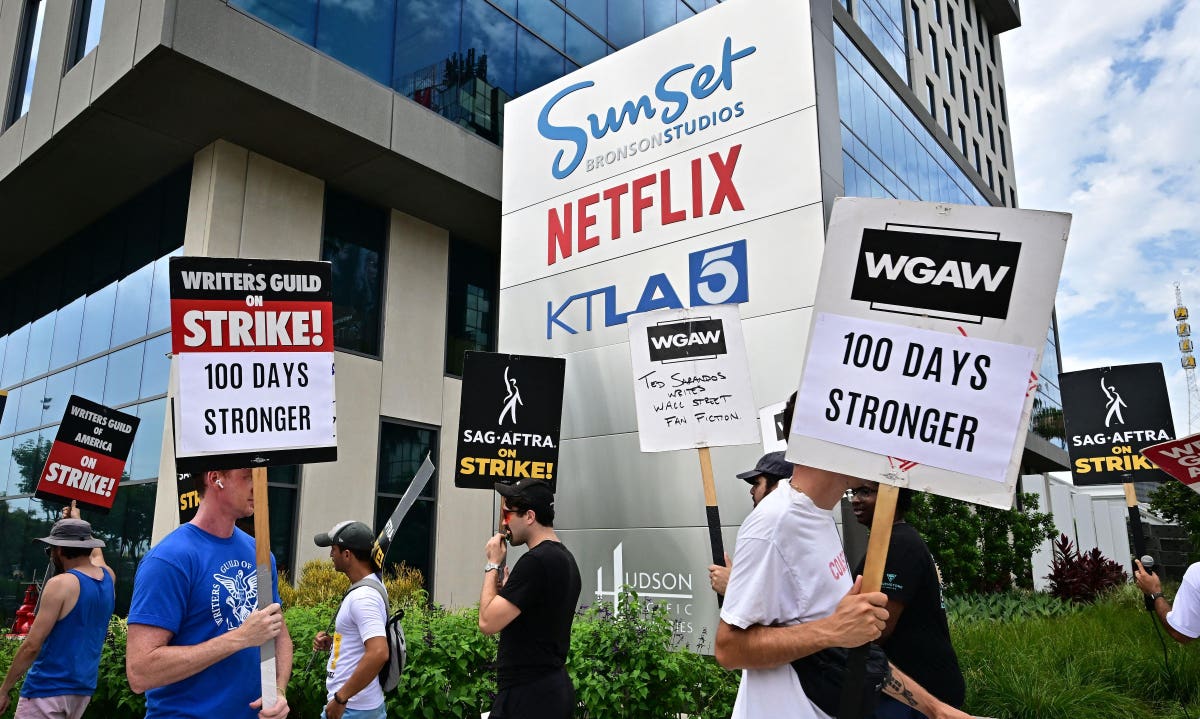The Writers Guild of America (WGA) strike has now reached 109 days, some 40 days away from becoming the longest writer’s strike in history. Increasingly calls have been made to bring the stalemate to a close. In a recent article published by CNBC, the financial toll of the strikes to the Los Angeles area alone is estimated to have surpassed $3 billion. Recently, LA Mayor Karen Bass has called for the “immediate” resolution of the strikes so that the entertainment industry can get back to work.
While the studios, represented by the Alliance of Motion Picture and Television Producers (AMPTP), and the writers who comprise the WGA may still be far apart on certain issues as according to multiple unidentified sources close to the negotiations, at least both sides have begun talking. This was something that didn’t take place from the beginning of the strike on May 2 until the AMPTP approached the WGA about sitting down at the negotiation table some two weeks ago on August 4. So, have there been any substantive discussions?
The short answer is no, however, last Friday, the AMPTP developed and presented a counterproposal to the WGA leadership as reported by Bloomberg. As of the time in which this article was published, the WGA was still reviewing these proposals and was not ready to make a public response just yet. What precisely is in the new proposal set forth by the AMPTP? According to multiple sources familiar with the negotiations, the AMPTP has focused on all of the WGA’s major concerns, including some that were deemed to be non-starters.
Here is a rundown of the demands of the WGA and the counterproposal offered by the AMPTP:
Increased Residuals
The WGA has called for an increase in residuals due to the shifting of audience consumption to streaming platforms. In the days when broadcast and cable television ruled the roost, writers were provided with sizeable compensation when the shows they had helped write were sold in syndication. In the age of streaming, however, many series are developed by a streaming service and then removed from the same service before ever finding their way onto other services or networks. Streaming series tend to be shorter as many have seasons ranging from 6-10 episodes whereas a traditional broadcast series would air 22 episodes in a season. Fewer episodes translates into lower residual amounts. In addition to fixed residuals, the WGA has also asked for a system to be developed for viewer-based streaming residuals. The reason why the WGA is asking for this is to ensure that writers are appropriately compensated for when the shows and episodes they write are particularly successful.
In the AMPTP counterproposal, a greater than 20% increase in residual payments will be provided when a show is licensed to another network other than the one which created it. The counterproposal has also mentioned that companies will share data on the number of hours that a show is streamed so that writers can understand how popular their programs are. However, this proposed idea does not include details for tying compensation to the viewership levels.
Pay Increase and Workers Staffing Minimums
The WGA has demanded a 6% pay increase in the first year of the new contract and minimum work guarantees. The transition to streaming has resulted in lower writer pay. On TV show staffs, an increased number of writers are working at a minimum pay rate regardless of their experience or they are placed in “mini-rooms.” So, what exactly is a writer’s mini-room? While a traditional writer’s room is staffed by 7-10 writers who write 10 episodes of TV over the span of 12-22 weeks, a mini-room features a smaller team of writers, sometimes as few as 3 writers, who write over an 8-10-week duration. Another key difference between a traditional writer’s room and a mini-room is that writers in a mini-room are writing an entire season of a series that has yet to be greenlit, which means that they are being paid less to do more work. In addition, the work may never be seen by audiences because the studio can still choose not to greenlight the series.
The counterproposal calls for a 5% pay hike in year one and a minimum duration of work for writers in “mini-rooms.” The proposal will give showrunners the power to set the size of the staff and the show’s budget will also be factored in when considering staff size.
Protections Against AI
The WGA has called for protections against the use artificial intelligence in screenwriting so that the technology will not be used to replace writers. Back in March, regulations were proposed that would prohibit the use of AI for creating source material, writing, or rewriting literary material. Additionally, the guild called for a ban on the use of WGA members’ material to train AI.
The AMPTP’s counterproposal provides a more comprehensive set of regulations around the use of AI. However, the details of these new directives were not publicly disclosed. The studios had previously committed to the WGA that AI would not be classified as a “writer” under the new contract.
While separation between the WGA and AMPTP remains on these key contract issues, the fact that the two guilds have at least begun the process of negotiation is a sign of progress. If the resolution of this strike follows a similar path to that of the 2007-2008 strike, then we are in store for several rounds of negotiations before a deal is reached. Given the increased complexity of the negotiations this time, including the existential threat of AI technology, it is likely that this will be the case. Considering the job losses and economic damage resulting from this strike in combination with that of the SAG-AFTRA work stoppage, we can all hope for a mutually beneficial resolution as soon as possible.
Read the full article here





